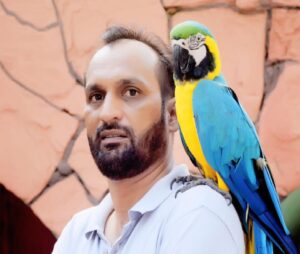Polo is a centuries-old horse sport that symbolizes speed, skill, and elegance. Played on horseback, it merges agility with strategy, making it one of the most exciting equestrian games. From royal courts in Persia to modern-day tournaments in Argentina and the U.S., polo has evolved into a prestigious international sport. This guide dives into every aspect of This sport, including its rules, history, equipment, and global presence.
What Is Polo Horse Sport?
This horse sport is a dynamic team game where riders use long mallets to drive a small ball into the opponent’s goal. Each team has four players mounted on swift, well-trained horses. The field stretches up to 300 yards, giving horses the space to reach full gallop as players compete in fast-paced chukkas.
A standard match consists of 4 to 8 chukkas, each lasting seven minutes. Horses are rotated between chukkas to ensure they remain energetic and safe throughout the game. Players demonstrate not just riding ability but also precision, timing, and teamwork.
History and Global Growth of Polo Horse Sport
The Origins
The origins of This Sport date back over 2,000 years to ancient Persia. Initially a training exercise for cavalry units, it became popular among nobility and military elites. By the 19th century, British colonists in India adopted the game and spread it globally.
Today, This Sport is played in over 80 countries. Argentina stands as the undisputed leader of the sport, producing the best players and horses. Meanwhile, nations like the U.K., U.S., Australia, and Pakistan have thriving polo communities and leagues.
Polo Horses: Breeds and Training
The Ideal Pony
In the world of polo, the term “pony” refers to the horse’s agility, not its size. The ideal pony is fast, responsive, and able to make sharp turns. Argentine Polo Ponies, Thoroughbreds, and Quarter Horses are among the most commonly used breeds.
These horses are trained for several years to master sudden stops, lateral movement, and rider cues. Because the game requires quick reflexes, the horse’s bond with the rider is essential. Horses are rotated regularly to avoid fatigue and injury during matches.
Essential Equipment in Polo Horse Sport
Both horse and rider rely on specialized gear to play This safely and efficiently.
Player Gear
- Helmet: Protects the head during falls or contact.
- Gloves and knee guards: Shield against impacts.
- Boots and breeches: Provide leg support and stability.
- Mallet: Made of bamboo with a rubber-wrapped grip; lengths vary based on horse height.
Horse Gear
- Saddle and bridle: Designed for high-mobility riding.
- Leg wraps or bandages: Prevent injuries from collisions or strikes.
- Special horseshoes: Offer traction on grass fields.
Good gear doesn’t just prevent injuries—it enhances performance. Transitioning between chukkas also allows for gear checks and pony changes, keeping the game flowing smoothly.
Polo Horse Sport Rules and Gameplay
The game of polo is governed by specific rules to ensure safety and fairness. Two mounted umpires officiate the match, while a third referee may assist from the sidelines.
Scoring and Strategy
Each goal earns one point. After every goal, teams switch sides to neutralize field conditions like wind or slope. Strategic positioning, known as “line of the ball,” dictates how players move. Interfering with an opponent’s right of way can result in penalties.
Fouls range from crossing an opponent’s line to reckless riding. Penalty shots are awarded based on the severity and location of the infraction. This adds a layer of strategy to the polo horse sport, as players must balance aggression with precision.
Polo Tournaments and Prestige
Globally, polo tournaments draw elite athletes and enthusiastic crowds. The Argentine Open, U.S. Open Polo Championship, and Queen’s Cup in England are among the most prestigious events.
Olympic Dreams and Modern Influence
Though polo was last played in the Olympics in 1936, efforts continue to revive it on the international stage. Meanwhile, its popularity grows in high-goal events and celebrity exhibitions, showcasing polo as a glamorous and thrilling sport.
Clubs and schools worldwide offer training programs, making polo more accessible. From grassroots initiatives to elite academies, the This Sport community is actively expanding.
Fitness and Lifestyle Benefits of Polo Horse Sport
Playing polo offers both physical and mental benefits. Riders develop balance, coordination, and core strength. It also improves focus, decision-making, and team communication.
A Sport of Elegance and Grit
While polo may be associated with luxury, it requires intense athletic effort. Training schedules are demanding, and matches are physically exhausting. Yet, for those passionate about the sport, the combination of elegance and grit is what makes polo so rewarding.
Final Words
This Horse Sport continues to capture the hearts of riders and spectators alike. With a rich history, global recognition, and thrilling gameplay, it stands as one of the most unique and dynamic sports in the equestrian world. Whether you’re watching your first match or preparing for your first chukka, offers a ride like no other.
: What kind of field is used for polo horse sport?
A standard polo field is 300 yards long and 160 yards wide, roughly equivalent to nine football fields.
How long is a polo horse sport match?
Matches include 4 to 8 chukkas, with each chukka lasting 7 minutes, plus time for breaks and horse changes.
Can beginners learn to play polo horse sport?
Absolutely! Many clubs offer beginner programs with trained ponies and instructors. Safety and gradual learning are prioritized.
Jehanzaib Ahmed
CEO
Meet Jehanzaib Ahmed, the Paw-some Force Behind Wildlypet!
As a lifelong animal lover, he has turned his passion into a profession. With an unwavering love for all creatures, he founded WildlyPet to provide top-notch care for your pet friends. With good experience in the pet care industry, he is a seasoned expert in ensuring the health and happiness of pets. His knowledge extends from pet nutrition to behavioral training, making him your go-to guru for all things pet-related.
Beyond his business, he is deeply involved in the local pet-loving community. He actively supports rescue organizations and advocates for pet adoption, believing that every pet deserves a loving home.


